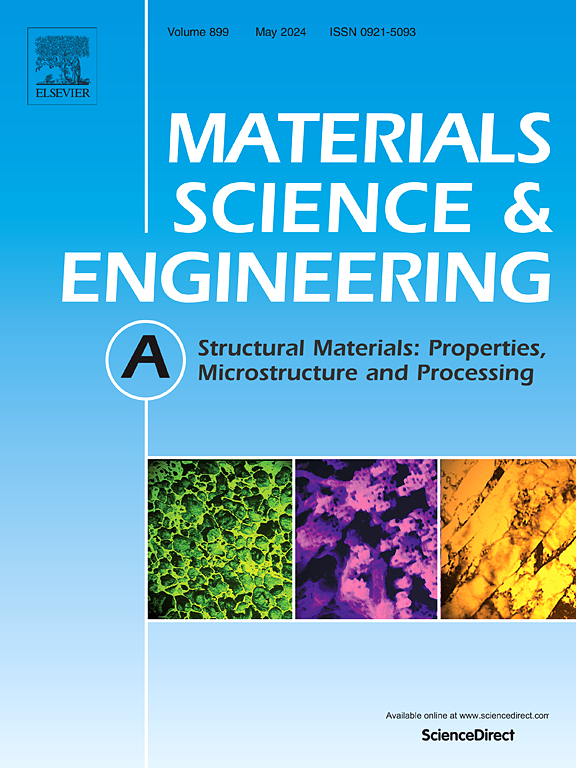On the strain and strain-rate hardenability of additively manufactured austenitic stainless steels
IF 6.1
2区 材料科学
Q1 MATERIALS SCIENCE, MULTIDISCIPLINARY
引用次数: 0
Abstract
Dislocation cells (DCs) are peculiar substructures frequently observed in plastically deformed (PD) and additively manufactured (AM) metals and alloys, and the latter typically exhibit visible elemental segregation along the DC boundaries. This work comparatively analyzes the DC effects on the strain-hardening and strain-rate hardening capabilities of PD and AM austenitic stainless steels (ASSs). The findings suggest that the presence of Cr/Mo-decorated DCs contributes to superior yield strength and admirable mechanical stability for AM ASSs. However, the high critical stress required for deformation twinning leads to a decreased twinning ability, resulting in lower strain hardening capability for AM ASSs compared to PD counterparts. Additionally, micron-sized DCs significantly enhance the strain-rate hardening capability of the AM parts by reducing the dislocation-free path. The inherent DC substructure of these AM materials demonstrates promising energy-absorption performance under extreme-speed deformation conditions, particularly combined with intricate structural design advantages.
增材制备奥氏体不锈钢的应变和应变率淬透性
位错胞(DC)是在塑性变形(PD)和增材制造(AM)金属和合金中经常观察到的特殊亚结构,后者通常沿DC边界表现出明显的元素偏析。对比分析了直流对PD和AM奥氏体不锈钢应变硬化和应变速率硬化能力的影响。研究结果表明,Cr/ mo修饰dc的存在有助于AM ASSs具有优异的屈服强度和良好的机械稳定性。然而,变形孪晶所需的高临界应力导致孪晶能力下降,导致AM ASSs的应变硬化能力低于PD。此外,微米级dc通过减少无位错路径,显著提高了增材制造零件的应变率硬化能力。这些增材制造材料固有的直流子结构在极高速变形条件下表现出良好的吸能性能,特别是结合复杂的结构设计优势。
本文章由计算机程序翻译,如有差异,请以英文原文为准。
求助全文
约1分钟内获得全文
求助全文
来源期刊

Materials Science and Engineering: A
工程技术-材料科学:综合
CiteScore
11.50
自引率
15.60%
发文量
1811
审稿时长
31 days
期刊介绍:
Materials Science and Engineering A provides an international medium for the publication of theoretical and experimental studies related to the load-bearing capacity of materials as influenced by their basic properties, processing history, microstructure and operating environment. Appropriate submissions to Materials Science and Engineering A should include scientific and/or engineering factors which affect the microstructure - strength relationships of materials and report the changes to mechanical behavior.
 求助内容:
求助内容: 应助结果提醒方式:
应助结果提醒方式:


